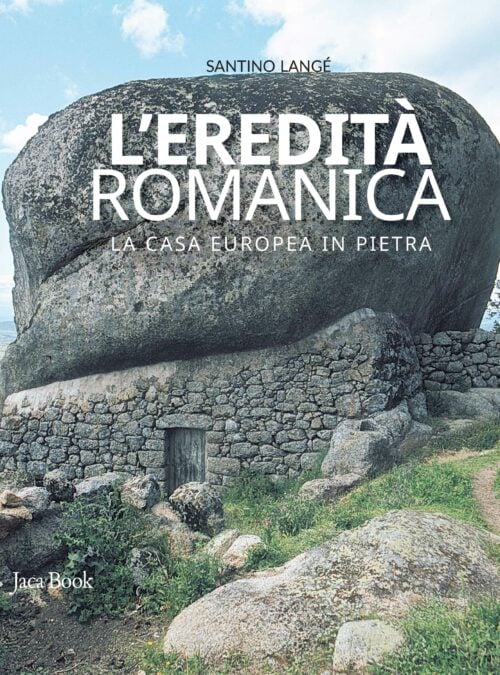THE ROMANESQUE HERITAGE. THE EUROPEAN STONE HOUSE
by Langé Santino
Santino Langé\’s impressive research shows that the history of the stone, understood as a living history of human living, is one of the foundations of European civilization
Stone is the largest and most mysterious gesture of living and building; the scenario that represents the process of building the human home in the world. The work of the great architect and urban historian Santino Langé wants to capture the relationship that, through the act of building the house or the village, man establishes with nature, drawing the measure of living from a primordial structure.
This phenomenon is found in the European geographical area where the use of stone, as a symbolic material, is more evident and widespread. The shape and characteristics of the houses are related to the aggregative structures of society: the family, the local community and popular social formations. We are therefore able to read, in terms not only geographically, the logic that underlies the shape of the villages, their distribution over the territory and the network of connections.
The result is a picture that connects the aspects of living in the vast area of western Europe, in which the symbolic value of the house and the village is ultimately the formal representation of a culture and a system of human relationships with nature, based on a symbolic solidarity that remains over time to define the European culture.
- Publishing house Jaca Book
- Year of publication 2020
- ISBN 9788816606081
- Foreign Rights Stefano Miceli (stefano.miceli@jacabook.it)
- Price 90.00 €
Langé Santino
SANTINO LANGÉ (1936-2018), architect, was full professor of History of Architecture at the Milan Polytechnic. From 1972 to 2006 he carried out numerous assignments of official teaching specialization courses and doctorates at the University of Genoa, the Polytechnic of Milan, the University of Brescia and the State University of Milan






